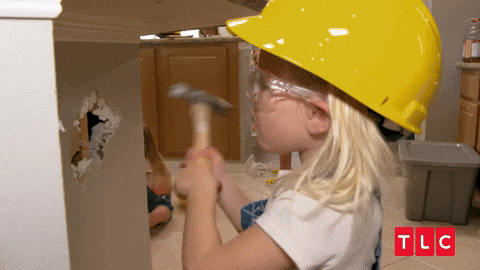Science education doesn’t have to be expensive. While microscopes, chemistry sets, and prepared lab materials certainly have their place, there exists a wealth of free resources that can shore up any homeschool science curriculum.
Virtual labs allow students to conduct experiments at home that might otherwise be inaccessible due to cost, safety concerns, or resource limitations. Meanwhile citizen science projects connect learners to real research, where they can contribute meaningful data to scientific studies.
This article presents 45 free resources organized by age group and scientific discipline. From elementary through high school levels, these carefully selected tools cover life science, physical science, and earth and space science, all without requiring financial investment.
These resources won’t replace all hands-on experiences, but they offer valuable supplementary learning opportunities that can significantly enrich science education in your home school.
So let’s look at some free homeschool science resources. Because everyone likes free resources.
Why Virtual Labs and Citizen Science?
So what makes these digital resources so valuable for homeschool science?
Let’s break it down.
Virtual labs and simulations are game-changers for home education. They let students try experiments that would be impossible at home (unless you happen to have an electron microscope in your garage). Kids can see things that are normally invisible, like molecules bouncing around or the inside of a cell. When something goes wrong, they can mess up and try again without destroying the kitchen.

They can change variables and instantly see what happens: “What if we double the heat?” or “What happens with no gravity?” Best of all, kids get to use expensive equipment they’d never get their hands on otherwise.
Citizen science projects take learning to another level. Students aren’t just doing exercises from a textbook. They’re contributing to real science that actually matters. They work on the same questions that professional scientists are trying to solve, connecting with researchers and other science enthusiasts around the world. There’s something incredibly motivating about seeing how their small contribution fits into a much bigger picture. These projects transform science from a solitary study into a collaborative adventure.
Mix these approaches together, and you’ve got science education that balances book learnin’ with practical application.
Elementary School (K-5)
Life Science
Bioman Biology Games
Interactive games covering cells, genetics, and ecosystems. The colorful animations and simple controls make complex biological concepts accessible to younger children.
iNaturalist Seek App
This kid-friendly app helps children identify plants and animals without creating an account or sharing location data. It transforms casual nature walks into opportunities for scientific observation.
BioInteractive Elementary Resources
Interactive videos and activities about animals, plants, and ecosystems designed specifically for young learners, with appropriate visual support and engaging content.
Journey North
A program for tracking seasonal changes and wildlife migration, with simple reporting tools designed for children. Following monarch butterflies or hummingbirds as they migrate creates engagement with biological concepts.
Exploratorium’s Life Sciences Activities
Simple at-home experiments and interactive online activities about living organisms. These concise science snacks are appropriate for shorter attention spans.
Physical Science
cK12 Exploration Series
Interactive simulations covering simple machines, states of matter, and basic physics concepts. The step-by-step approach effectively introduces fundamental physical science principles.
PBS Kids Science
Virtual games designed for early elementary students feature familiar characters that guide children through basic science concepts. The playful approach helps maintain student engagement.
PhET Elementary Simulations
Simple interactive simulations about magnets, states of matter, and forces allow young children to manipulate variables and observe immediate results.
Science Kids Online Experiments
Virtual and hands-on experiments with clear explanations suitable for younger students. The bright visuals and straightforward language enhance accessibility.
Science Buddies Free Elementary Activities
Hands-on science activities designed for elementary students using common household materials. Each activity includes clear instructions, explanations of the scientific concepts, and questions to extend learning. Perfect for independent exploration or guided discovery.
Earth & Space Science
NASA Climate Kids
Interactive activities and games about Earth’s climate system designed for younger students. Complex topics like the greenhouse effect are presented in an accessible manner.
GLOBE Observer
This simplified citizen science app allows children to make cloud observations and contribute to NASA research. The knowledge that their observations assist actual scientists provides additional motivation.
SciJinks Weather Laboratory
NOAA’s interactive site includes weather experiments, games, and simple weather tracking activities suitable for elementary-aged students interested in meteorology.
USGS Education Resources for K-5
Interactive earth science activities, games, and visual resources from the U.S. Geological Survey covering rocks, minerals, volcanoes, and water systems. This government resource offers scientifically accurate content with engaging visuals and animations that make geological concepts accessible to elementary students.
NASA Space Place
Interactive games and activities about planets, stars, and space exploration designed specifically for elementary students. The content effectively breaks down complex astronomy into comprehensible components.
Middle School (6-8)
Life Science
Virtual Biology Labs from Virtual Science Teachers
Interactive modules on cells, genetics, and ecosystems with guided activities that help middle school students develop more independent laboratory skills.
Cells Alive!
This site is going offline. Download it for free while you can. Interactive cell models and simulations of cellular processes make microscopic activities visible and comprehensible. Particularly beneficial for visual learners.
Learn.Genetics
Interactive modules on genetics, cell biology, and human health with outstanding visualizations and games that clarify complex concepts.
The Habitable Planet
Interactive ecology labs and ecosystem explorations with online simulations help students understand ecological interconnections.
Howard Hughes Medical Institute (HHMI) BioInteractive
High-quality animations, virtual labs, and interactive activities about biological concepts created by scientists but accessible to middle school students.
Physical Science
PhET Interactive Simulations (Middle School Collection)
Physics and chemistry simulations tailored for middle school complexity levels, allowing students to experiment with phenomena that would be difficult to demonstrate in a home setting.
ChemCollective Virtual Labs
Chemistry simulations with guided activities provide an appropriate introduction to chemical concepts without the safety concerns associated with home chemistry laboratories.
Physics Classroom Interactives
Interactive physics demonstrations and challenges covering mechanics, waves, and energy, accompanied by clear explanations of the underlying principles.
Concord Consortium Interactive Simulations
Interactive physics and chemistry activities with embedded assessments that help evaluate understanding as students progress through the material.
NOVA Labs Physics
Engaging interactive activities about energy, forces, and other physical science concepts that incorporate real-world applications relevant to middle school students.
Earth & Space Science
IRIS Earthquake Browser
Students can monitor real-time earthquake data worldwide and contribute observations. The real-time aspect adds an engaging dimension to the learning experience.
Earth Nullschool
This visualization of global weather conditions displays wind patterns and atmospheric conditions in a manner that makes complex global systems visible and interpretable.
NASA Earth Observatory
Interactive maps and visualizations of Earth data with middle-school appropriate explanations that make satellite data comprehensible.
NOAA Data in the Classroom
Interactive modules that utilize real ocean and atmospheric data to explore environmental changes, helping students develop data literacy skills.
High School (9-12)
Life Science
LabXchange Biology Collection
College-prep level simulations on molecular biology, including DNA extraction and gel electrophoresis, providing sophisticated laboratory experiences without requiring expensive equipment.
Foldit
A protein-folding game where players’ solutions contribute to actual scientific research. Students actively help scientists solve protein structures while engaging with the platform.
Virtual Microscope
High-resolution microscopy of biological specimens with advanced controls allows students to explore cells and tissues at a level of detail impossible with basic microscopes.
Zooniverse Penguin Watch
Students can assist researchers in monitoring penguin populations and behavior through image classification, contributing to actual conservation research.
Physical Science
Molecular Workbench Advanced Simulations
Sophisticated models of atomic interactions, quantum mechanics, and chemical reactions visualize phenomena that are otherwise impossible to observe directly.
PhET Advanced Physics
College-preparatory simulations covering mechanics, electricity, magnetism, and modern physics, allowing students to experiment with complex physical systems.
The Concord Consortium: Next-Generation Molecular Workbench
HTML5 molecular dynamics simulations that illuminate advanced chemistry concepts through interactive, manipulable models.
American Association of Chemistry Teachers Virtual Chemistry Labs
Advanced interactive simulations for high school chemistry concepts provide safe alternatives to potentially hazardous chemistry experiments.
Earth & Space Science
NOVA Labs Earth System Science
In-depth interactive modules on climate science, earth systems, and environmental issues include real data and sophisticated analysis tools.
Zooniverse Galaxy Classification
Students can assist astronomers in classifying galaxies from telescope images with scientific guidance, contributing to our understanding of the universe.
USGS Science in Your Watershed
Advanced hydrological data analysis tools and watershed modeling resources allow students to explore local water systems from a scientific perspective.
Climate Time Machine
This tool allows students to visualize changes in sea ice, sea level, carbon dioxide, and global temperature through interactive features that make climate data accessible.
Landslide Reporter
Students can contribute to NASA’s landslide database by reporting landslides and analyzing data, participating in actual natural hazard research.
Adapting These Resources to Your Homeschooling Style
These resources can be adapted to fit virtually any homeschooling approach. Here are some ideas to get you started:
For Classical Education
Classical education focuses on the stages of grammar, logic, and rhetoric. Here’s how to adapt these resources:
- Use virtual labs and simulations in the Grammar Stage (elementary) to help students memorize scientific facts and vocabulary
- In the Logic Stage (middle school), incorporate citizen science projects to develop analytical thinking about causation and relationships
- For the Rhetoric Stage (high school), have students create persuasive presentations about their findings from virtual labs or citizen science contributions
- Create memory work flashcards based on concepts demonstrated in the simulations
- Pair PhET simulations with classical texts about similar scientific concepts
For Charlotte Mason Homeschoolers
Charlotte Mason emphasized living books, nature study, and narration. Try these modifications:
- Combine short sessions with virtual labs (15-20 minutes) with nature walks and observations
- Have students keep detailed nature journals that incorporate both real-world observations and insights from virtual experiments
- Focus on living science by connecting virtual labs to real-world phenomena
- Use the citizen science projects as extensions of nature study
- After using NASA Climate Kids, have students create detailed narrations of what they learned
For Unit Studies
If you prefer an integrated approach across subjects, try these ideas:
- Build comprehensive units around citizen science projects, incorporating history, literature, and math
- Create thematic studies that combine multiple virtual labs around a central concept
- Develop project-based assessments that incorporate both virtual and hands-on elements
- Build a complete unit around Zooniverse Galaxy Classification that includes astronomy, physics, history of space exploration, and science fiction literature
For Unschoolers/Interest-Led Learning
Following your child’s interests? These adaptations might help:
- Keep a curated list of resources available for when interest arises naturally
- Allow students to deeply explore any simulation or citizen science project that captures their interest
- Use resources to answer questions that emerge during everyday activities
- When a child shows interest in clouds, introduce GLOBE Observer as a way to deepen that curiosity
- If a current event sparks interest (like an earthquake), immediately explore the IRIS Earthquake Browser
For Montessori-Inspired Homeschooling
Montessori focuses on self-directed learning and sequential skill development:
- Set up a dedicated science station on a computer or tablet with selected virtual labs
- Create cards with simple instructions for self-directed use of simulations
- Establish a sequence of activities that builds from simple to complex within each platform
- Create Montessori-style three-part cards that correspond to concepts in PhET simulations
Final Thoughts
Science education doesn’t have to be expensive or complicated. With these free resources, you can provide rich, engaging scientific experiences right from home. Whether your student is fascinated by dissecting a virtual frog, tracking real-time earthquake data, or contributing to penguin conservation research, there’s something here to spark curiosity and deepen understanding.
The best science education combines different approaches. Try pairing a virtual lab with a related hands-on activity, or follow up a citizen science observation session with research into related topics. The goal is to foster not just scientific knowledge but scientific thinking: observation, hypothesis formation, experimentation, and drawing evidence-based conclusions.
